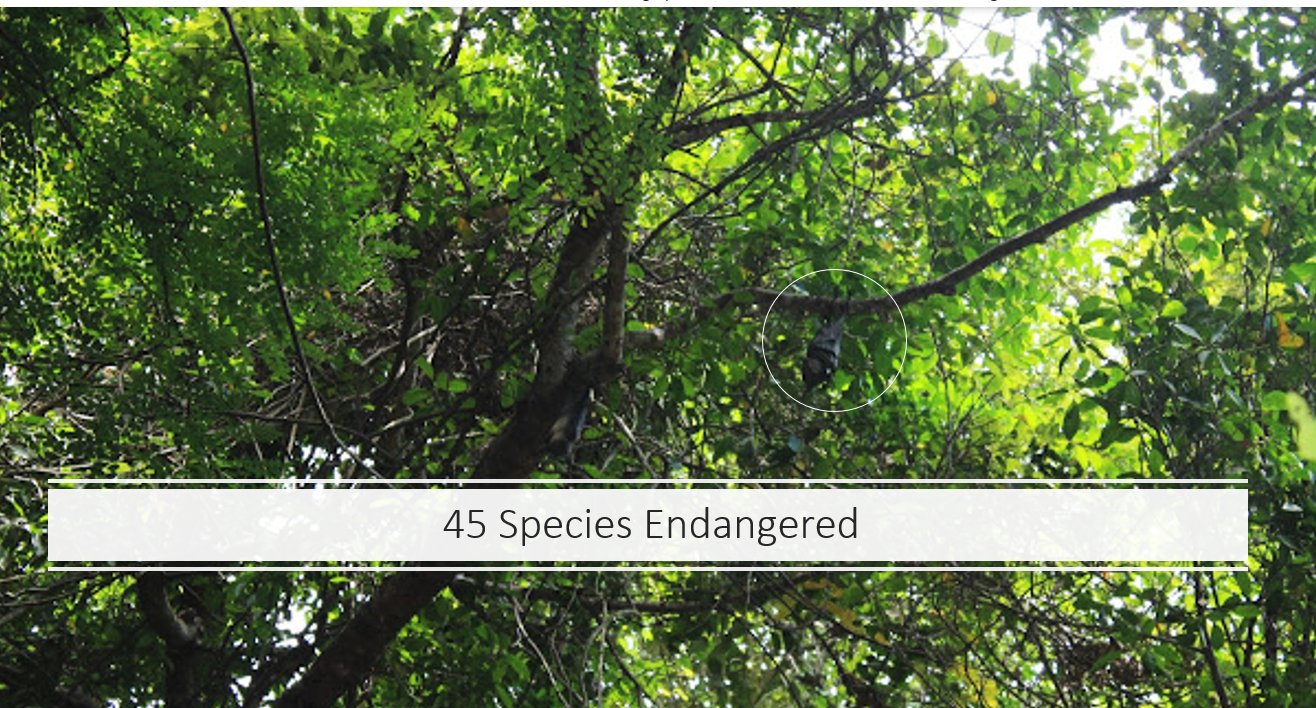Papua New Guinea is known for its rich biodiversity, but unfortunately, many of its unique species are at risk of extinction.
According to the International Union for Conservation of Nature (IUCN) Red List, there are currently 45 endangered species in Papua New Guinea, which include amphibians, birds, fish, mammals, reptiles, and vascular plants.
This article provides the names of the endangered species in Papua New Guinea listed in 2019.
Endangered Species in Papua New Guinea
The list of endangered species in Papua New Guinea includes:
- Thryssa rastrosa (Oblique-jaw Thryssa)
- Dendrobium pachythrix
- Dactylopsila tatei (Tate's Triok)
- Actenoides bougainvillei (Bougainville Moustached Kingfisher)
- Pteralopex anceps (Bougainville Monkey-faced Bat)
- Rattus vandeuseni (Van Deusen's Rat)
- Dendrolagus matschiei (Matschie's Tree-kangaroo)
- Horsfieldia ralunensis (Nutmeg)
- Peroryctes broadbenti (Giant Bandicoot)
- Paphiopedilum papuanum (Papua Paphiopedilum)
- Phalanger lullulae (Woodlark Cuscus)
- Chelodina pritchardi (Pritchard's Snake-necked Turtle)
- Pitta superba (Superb Pitta)
- Sticta alpinotropica
- Calophyllum morobense
- Calophyllum waliense
- Echymipera davidi (David's Echymipera)
- Alsophila klossii
- Paphiopedilum glanduliferum (Gland-Bearing Paphiopedilum)
- Thylogale lanatus (Mountain Pademelon)
- Bulbophyllum tinekeae
- Ornithoptera alexandrae (Queen Alexandra's Birdwing)
- Helicia insularis
- Melomys matambuai (Manus Melomys)
- Gymnopholus lichenifer (Lichen Weevil)
- Thylogale calabyi (Calaby's Pademelon)
- Diospyros gillisonii
- Diospyros insularis
- Santalum macgregorii
- Paramelomys gressitti (Gressitt’s Paramelomys)
- Dendrobium kauldorumii
- Dendrolagus notatus
- Bulbophyllum bliteum
- Pogonomys fergussoniensis (D’entrecasteaux Archipelago Pogonomys)
- Bulbophyllum cimicinum
- Otidiphaps insularis (Black-naped Pheasant-pigeon)
- Oryza schlechteri
- Chaetodontoplus vanderloosi
- Cetreliopsis papuae
- Ponapea hentyi
- Paphiopedilum violascens (Shimmering Purple Paphiopedilum)
- Solomys salebrosus (Bougainville Giant Rat)
- Neopomacentrus aquadulcis
- Paphiopedilum wilhelminae (Wilhelminha's Paphiopedium)
- Bulbophyllum hiljeae
IUCN Red List
The IUCN Red List categorizes species based on their for the conservation of these endangered species.
It is important for the government of Papua New Guinea to address the root causes of biodiversity loss, such as habitat destruction, overhunting, and the introduction of invasive species.
Community-based conservation initiatives can also be effective in engaging local people in the conservation of their natural resources.
PNG is home to a rich and diverse
We know that Papua New Guinea is home to a rich and diverse array of plant and animal species, many of which are currently facing the threat of extinction.
Acknowledging that the IUCN Red List serves as an important tool for monitoring and assessing the conservation status of these species. will help conservation efforts.
All in all, it is up to all of us, as individuals, communities, and governments, to take action to protect these species and preserve the unique biodiversity of Papua New Guinea for generations to come.








